Last updated April 2024 | Words and photos by Vietnam Coracle | 13 comments

Tom Divers is the founder & creator of Vietnam Coracle. He’s lived, travelled & worked in Vietnam since 2005. Born in London, he travelled from an early age – his first trip to Vietnam was in 1999 – visiting over 40 countries. Now, whenever he has the opportunity to make a trip, he rarely looks beyond Vietnam’s borders & his trusty motorbike, Stavros. Read more about Tom on the About Page, Vietnam Times and ASE Podcast.
A new, big ship called Thăng Long, with a capacity for over 1,000 passengers on three decks, is now operating on the sea route linking the mainland seaside city of Vũng Tàu with the remote island of Côn Sơn, in the magical Côn Đảo Archipelago. This sea crossing, operated by Côn Đảo Express, is a great alternative to flying for travellers who prefer a voyage to a flight, or who value an experience over convenience. I love boat journeys and, in the case of the Côn Đảo Islands, I can’t think of a more spectacular introduction to this archipelago than arriving by ship. The Côn Đảo Islands have grown in popularity over the last few years and more fast boat connections to the mainland have opened to meet demand. This new, big fast ferry is the largest passenger vessel currently operating of any of the popular sea crossings in Vietnam. The voyage takes around 4 hours and sails once in either direction every other day.

[Back Top]
VUNG TAU→CON DAO EXPRESS FERRY
On this page, I’ve written a complete guide to taking the express ferry between Vũng Tàu and Côn Sơn Island, in the Côn Đảo Archipelago. I’ve included a map and all relevant information for travellers on this ferry route. To book tickets, you can help support my website by using the Baolau.com links and search boxes on this page, although sometimes it may not be possible to book through them. Alternatively, go to the Côn Đảo Express website. Note that the sailing schedule changes regularly due to sea conditions. Click from the contents below for more details:
Get the Offline Guide & Map $15
Includes:
- Custom-designed PDF version of the Con Dao Islands guide
- Instructions to load the map to your phone & use it offline
- Full use of guide, map & navigation anywhere, anytime
ROUTE MAP:
Vung Tau→Con Dao Express Ferry
About this Ferry:
Operated by Côn Đảo Express, the sea route between Vũng Tàu and Côn Sơn Island has been running for several years. But, since March 2024, a big new ship, called Thăng Long, has replaced the former fast boats. The new ship had been advertised since 2020, but it has only now become fully operational. The new vessel is intended to meet the surge in demand among domestic tourists to the Côn Đảo Islands. It is also slightly faster than the old ferry and, apparently, handles the often rough conditions better, which helps to reduce sea sickness among passengers.
What makes this ferry route appealing to me (apart from the fact that I love taking boats), is that it’s the closest sea connection to the Côn Đảo Islands from Saigon (Ho Chi Minh City), where I live. In the near future, there will be a direct ferry service between Saigon and Côn Đảo, but until then the Vũng Tàu boat is the best option. This will be particularly important for travellers in the coming years, because the airport on Côn Sơn Island is due to close for several months for an upgrade, meaning the only way to get to the islands will be by sea. Hence the recent increase in ferry routes to Côn Đảo from the mainland: it’s now possible to sail directly from Vũng Tàu, Cần Thơ, and Trần Đề (in Sóc Trăng Province).
Unfortunately, because of the current sailing schedule, it’s not quite possible to link the Vũng Tàu→Côn Đảo ferry directly with the Saigon→Vũng Tàu ferry, thus creating a complete ferry route Saigon→Vũng Tàu→Côn Đảo. The arrival and departure times don’t quite synchronize. Nor do the sailing times for the Cần Giờ→Vũng Tàu ferry. This means that you essentially have to travel to Vũng Tàu the night before departure on the ferry to Côn Đảo. But this isn’t a problem as Vũng Tàu is a very pleasant place to spend a day or two. The only way to get from Saigon to Côn Đảo in a single day via the ferry is to ride to Vũng Tàu very early in the morning, leaving Saigon at around 4.30am.
*Book ferry tickets directly from this page & help support my website. Use the Baolau.com search box below to book your ferry tickets on the Vung Tau→Con Dao route. If you make a booking, I receive a small commission. All earnings go straight back into this website. Thank you. Tom


Times & Prices:
Travellers should bear in mind that the sailing schedule on this route changes regularly and, during very rough seas, boats often don’t sail at all – sometimes for days, even weeks, at a time. In general, the rough season is November-February. Below is the sailing schedule at the time of research (April, 2024). Journey time is between 4-5 hours and the ship has capacity for over 1,000 passengers. Cars, motorbikes and (as far as I know) bicycles are not permitted on the boat. Ticket prices are higher from Friday to Sunday and on public holidays:
Sailing Schedule:
| Route | Departure Time |
| Vũng Tàu→Côn Đảo | 7.30am (Mon, Tues, Thurs, Fri, Sat) |
| Côn Đảo→Vũng Tàu | 1pm (Mon, Wed, Thurs, Fri, Sun) |
Ticket Prices:
| Day | Ticket Price |
| Monday to Thursday | 790,000vnđ |
| Friday to Sunday & public holidays | 950,000vnđ |
*There’s also a VIP ticket option (1,200,000vnđ) for a larger seat in a private cabin with more leg room (not worth the extra cost, in my opinion). There are reduced rates for children and the elderly (630,000vnđ/760,000vnđ) and passengers with disabilities (555,000vnđ/665,000vnđ). To check the latest schedule and prices either use the search box below or go to the Con Dao Express website.
*Book ferry tickets directly from this page & help support my website. Use the Baolau.com search box below to book your ferry tickets on the Vung Tau→Con Dao route. If you make a booking, I receive a small commission. All earnings go straight back into this website. Thank you. Tom


Booking Tickets:
Booking tickets should be a fairly hassle-free process. Travellers can book online or in-person. Try to book at least a few days or a week in advance, especially during the peak summer months and public holidays, during which tickets can sell out fast.
Online: You can support my website by booking through Baolau.com using the link or search box below, although sometimes it may not be possible to book through them. Alternatively, go to the Côn Đảo Express website and book there. Both platforms support most forms of online payment.
In Person: Côn Đảo Express has a ticket office at the port in Vũng Tàu (map) and in Côn Sơn town (map). Remember to bring your passport when making a booking.
*Book ferry tickets directly from this page & help support my website. Use the Baolau.com search box below to book your ferry tickets on the Vung Tau→Con Dao route. If you make a booking, I receive a small commission. All earnings go straight back into this website. Thank you. Tom

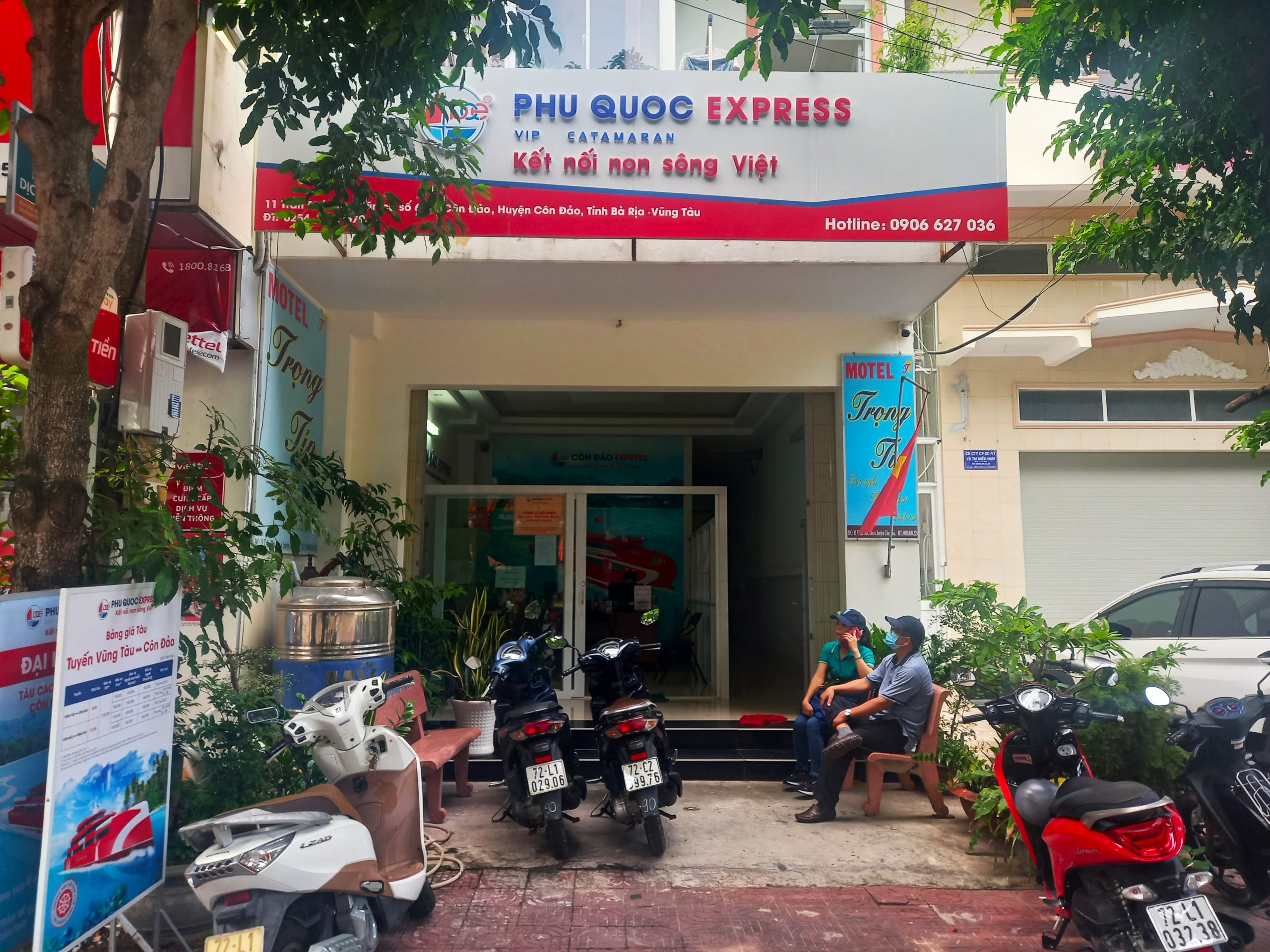

Departure & Arrival Ports:
In Vũng Tàu, the Cầu Đá ferry port is conveniently located and quite modern; on Côn Sơn Island, Bến Đầm port is rather inconveniently located, but utterly spectacular. Note that this ferry does not dock at new Bến Tàu Khách ferry port, right on the bay that fronts Côn Sơn town. See below for more detail about both ports:
Vũng Tàu: Cầu Đá Port [MAP]
Just north of pretty Bãi Trước beach, Cầu Đá port is about as central as you can be on the Vũng Tàu seafront. Easily accessible by motorbike taxi, ride hailing bike, or even on foot along the attractive seafront road, Cầu Đá is a rather bizarre modern structure – presumably representing waves or ripples on the ocean – jutting over the sea. There’s a gas station, fast food restaurants, cafes, long- and short-term motorbike and car parking, and ticket kiosks. It should be fairly easy to navigate for most travellers. The Côn Đảo Express ticket office is just inside the central front entrance; parking is on the right of the main port building as you enter from the road; the ferry pier is at the north end of the port complex. Metered taxis queue up to meet the boats or you can book a pick-up through a ride hailing app, such as Grab. If you have your own wheels, the long-term parking lot has its day/night rates clearly listed in English as you enter the lot. Overall, the experience of using this port should be easy and efficient.
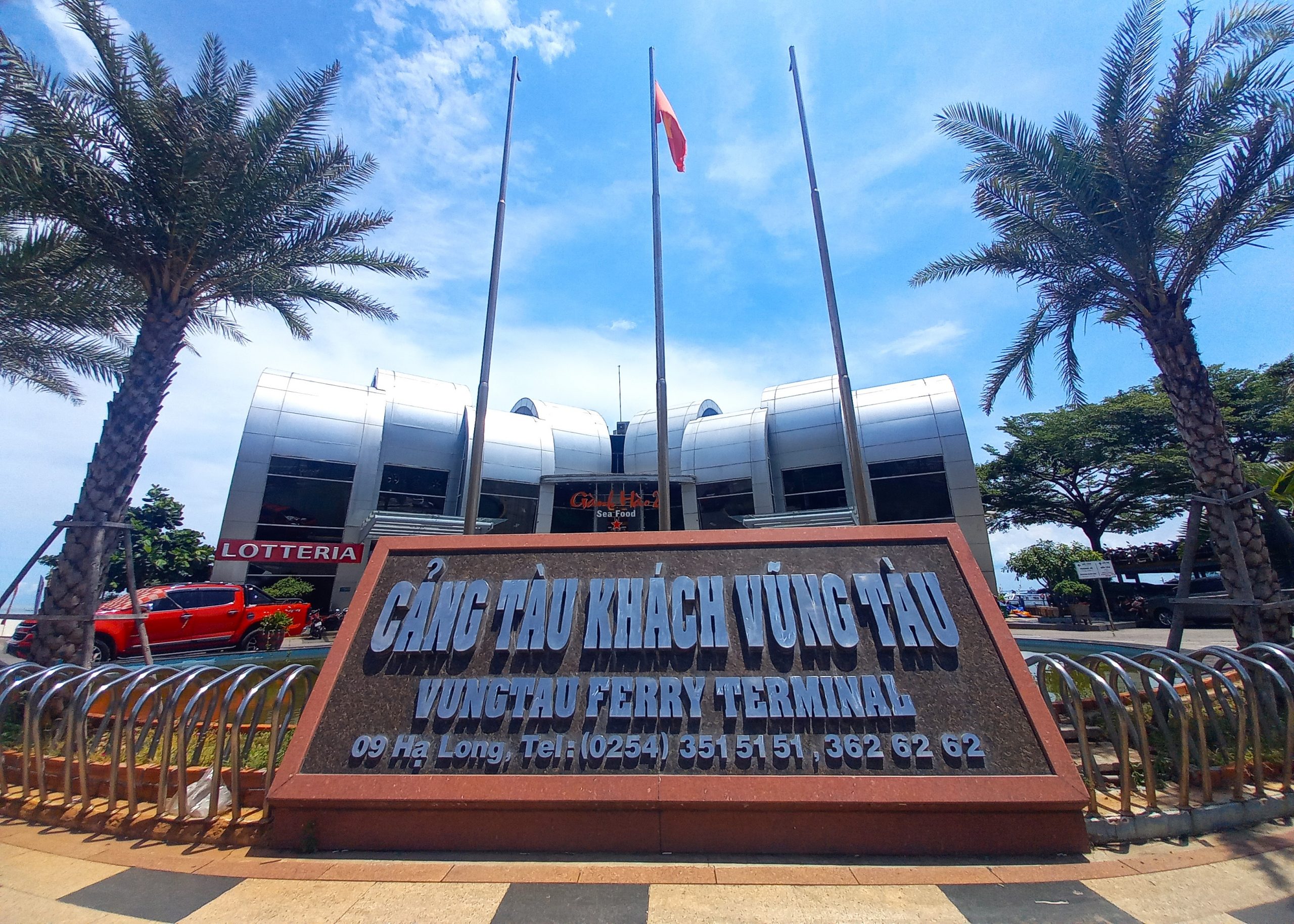
Côn Sơn Island: Bến Đầm Port [MAP]
Way down in the southwestern corner of Côn Sơn Island, Bến Đầm port is spectacularly located in a lagoon of blue water enveloped by jungle-clad hills. It’s a magical introduction to the Côn Đảo Islands. However, Bến Đầm is over 10km from Côn Sơn town, where most of the island’s accommodation is. Arrival and departure from the port is pretty straightforward, although it’s quite a long (and hot) walk up/down the pier if you’re carrying a lot of luggage in the heat or rain. Yellow buses marked ‘Xe Trung Chuyển’ ferry passengers between the terminal and the boat for free. However, they jam as many people (and their luggage) in the buses as possible, making it a very uncomfortable 90-second ride. Taxis, motorbike taxis and electric buggies meet the boats. Prices for the ride along the stunning coast road to Côn Sơn town should be between 100,000-300,000vnđ depending on the transportation method and number of people. If you’ve booked a hotel in advance, they might be able to arrange a pick up for you (for an added charge). There are snack shops clustered around the port entrance and an echoey ferry terminal with indoor seating and ticket counters.

The Boats:
The new boat operating on the Vũng Tàu→Côn Đảo route is the Thăng Long, a three-storey vessel painted red with white stripes, run by Côn Đảo Express. The ship is sleek and modern, resembling a billionaire’s leisure yacht, rather than a passenger ferry. Thăng Long has capacity for 1,017 passengers, which is twice the size of the old ferry and the equivalent of one tenth of the population of the Côn Đảo Islands. On board there are two decks of coach-style seating on reclinable soft chairs with 14 seats per row. The bottom deck is reserved for ‘VIP’ class, which has larger, business-class-style seats. The top deck is devoted solely to a cafe and lounge, serving sugary, mass-produced, processed food and drink, such as instant noodles, Pepsi, sweet Vietnamese coffee, Red Bull, and some boiled eggs.
The seating is fine and reasonably comfortable with a surprising amount of leg room. However, space is dramatically reduced if/when the passenger in front reclines their seat, in which case it can be a bit cramped. Although there’s nothing glamourous about the cabins, they’re spacious and not at all claustrophobic. The windows are large and the ceilings are high. Unfortunately, the air-conditioning is not adequate to control the temperature on such a large deck, so conditions can be uncomfortably stuffy at times.
A few of widescreen TVs play movies and pop videos throughout the voyage, but the volume is kept at a mercifully reasonable level. Each row of seats has two electrical sockets to charge your phone or laptop. At the back of the cabins, the toilets are kept clean, and the general level of cleanliness is good.
Outside deck space is accessed via doors at the back on the boat. Although the ship has a lot of deck space on three levels, during the voyage only the middle deck is open. This is fine, but there’s no outside seating, so passengers must either stand or sit on the floor. Thus, the deck is largely used by smokers and seasick passengers, rather than a place to enjoy the seascape and take photos. The best times to be out on deck is arrival and departure, when there’s lots to look at. During rough seas, all decks are closed.




The Voyage:
Queuing in the bright morning sunshine on the pier at Vũng Tàu, the boarding process is fairly informal and there’s a tangible excitement among the passengers. On board, there’s a measure of quiet chaos as hundreds of passengers are funneled through the doors, onto the boat, standing in the aisles, stowing their luggage and discussing who sits where. All seats are allocated on tickets, but in reality – as is quite often the case in Vietnam – seat numbers are often ignored. If this is the case, usually all it takes is a quick, polite exchange and a show of your ticket before sitting in your rightful spot. Unlike the old ferries, all the decks on the new ship are open before departure, which means passengers can wander around, exploring the vessel and taking photos. The engines rev and the boat pulls away from the pier at 7.30am. Delicately maneuvering out of port, the ferry quickly gets to speed and cuts through the sea heading due south.

The atmosphere on board is calm and quiet, especially once mobile data is out of reach: with no phones to distract them, the majority of passengers recline their seats and close their eyes. Outside the cabin windows, the ocean is blue, big and ruffled. Tankers stand stationary on the sea, waiting for available births in the ports of Vũng Tàu and Sài Gòn. The twin hills of Vũng Tàu recede on the horizon. Soon the ferry is all alone in the East Sea, save for the population of wind turbines visible to the west in the Mekong Delta province of Trà Vinh.
During the voyage, only the back deck on the second floor is open (sea conditions permitting). Out on the windy, sun-drenched deck, people mass for photos and snacks. On the top deck, where the snack bar is, the atmosphere is more lively, with groups gathered for coffee and conversation. Almost all passengers are Vietnamese – tourists, pilgrims, veterans, or islanders. Very few foreign travellers choose to take the boat to the Côn Đảo Islands, preferring to fly.

In good conditions, it’s a smooth, enjoyable, easy ride. The four hours pass comfortably, without incident: a chance to rest, to chat to your fellow passengers, to work on your laptop (there are electrical sockets on each row) or to reflect as you watch the waves go by. The only discomfort might be the bare feet on your armrest from the passenger in the row behind (a common ‘practice’ in Vietnam, especially among the older generation). However, things are by no means always this calm. The crossing is well-known for being rough. But, even in rough condition, the new ship feels impressively sturdy and can still make the crossing when the wind and waves are high.


Seasickness is very common among Vietnamese travellers. when conditions get rough, a tangible nervousness descends on the cabin. Vomiting is common. Obviously, if you also suffer from seasickness, the journey could be very uncomfortable. But, even if you don’t, you might be unfortunate enough to be sat between two passengers who are relentlessly throwing up into paper bags. Needless to say, this would be very unpleasant. But, of course, it must be much worse for your neighbours. I have friends who take this ferry route regularly, and they assure me it can be a harrowing experience. What’s more, Vietnam doesn’t exactly have a shining maritime safety record. However, in my experience on this crossing, I’ve felt safe and in pretty good hands, even during rough seas.

*Disclosure: I never receive payment for anything I write: my content is always free and independent. I’ve written this guide because I want to: I like this ferry and I want my readers to know about it. For more details, see my Disclosure & Disclaimer statements and my About Page
[Back Top]

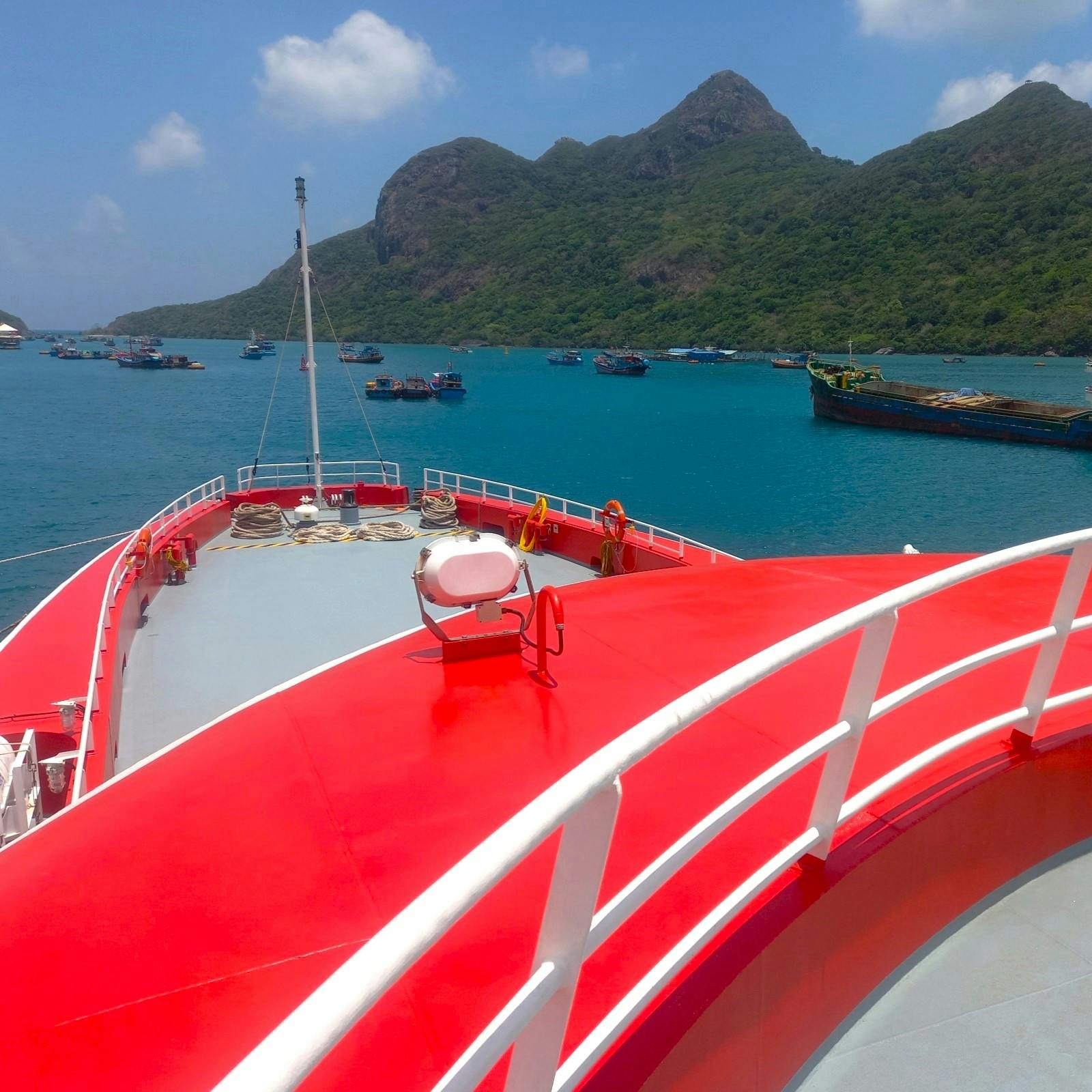
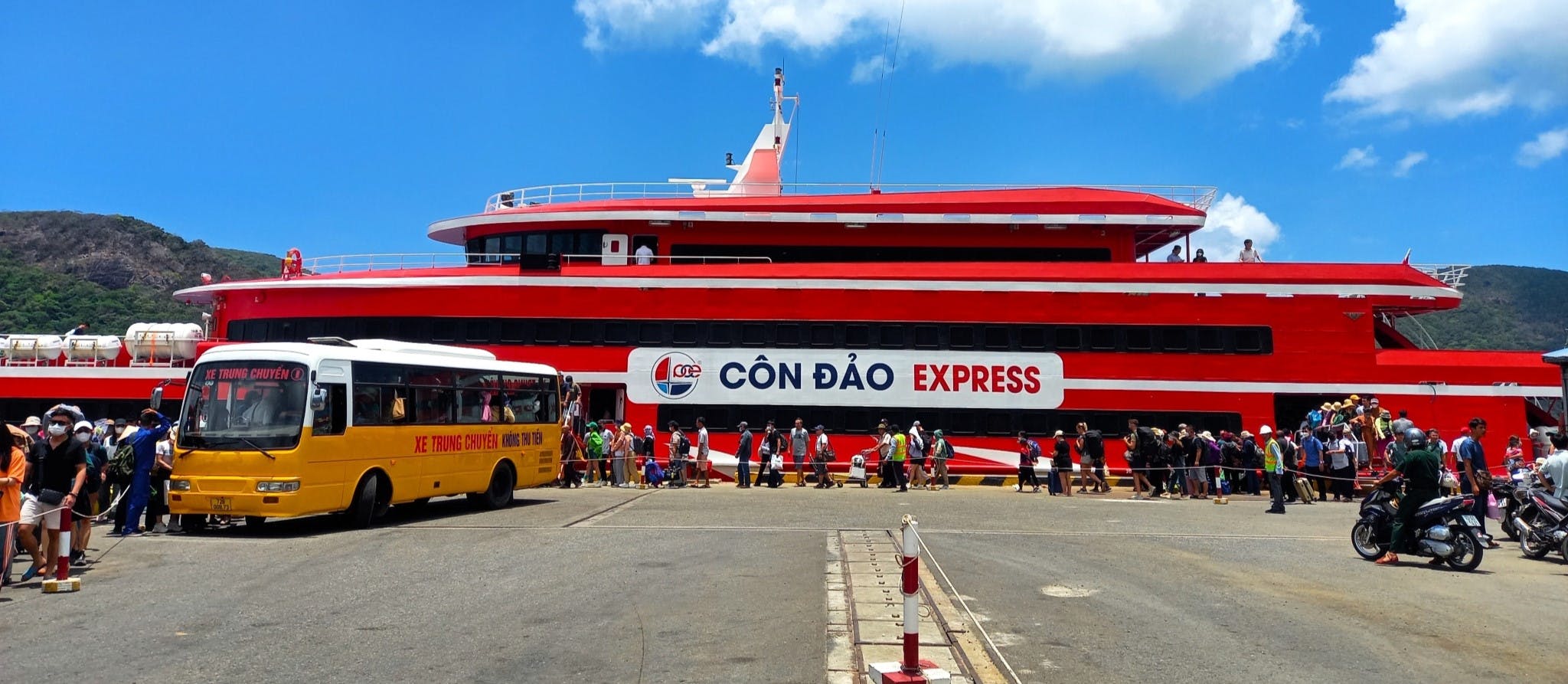
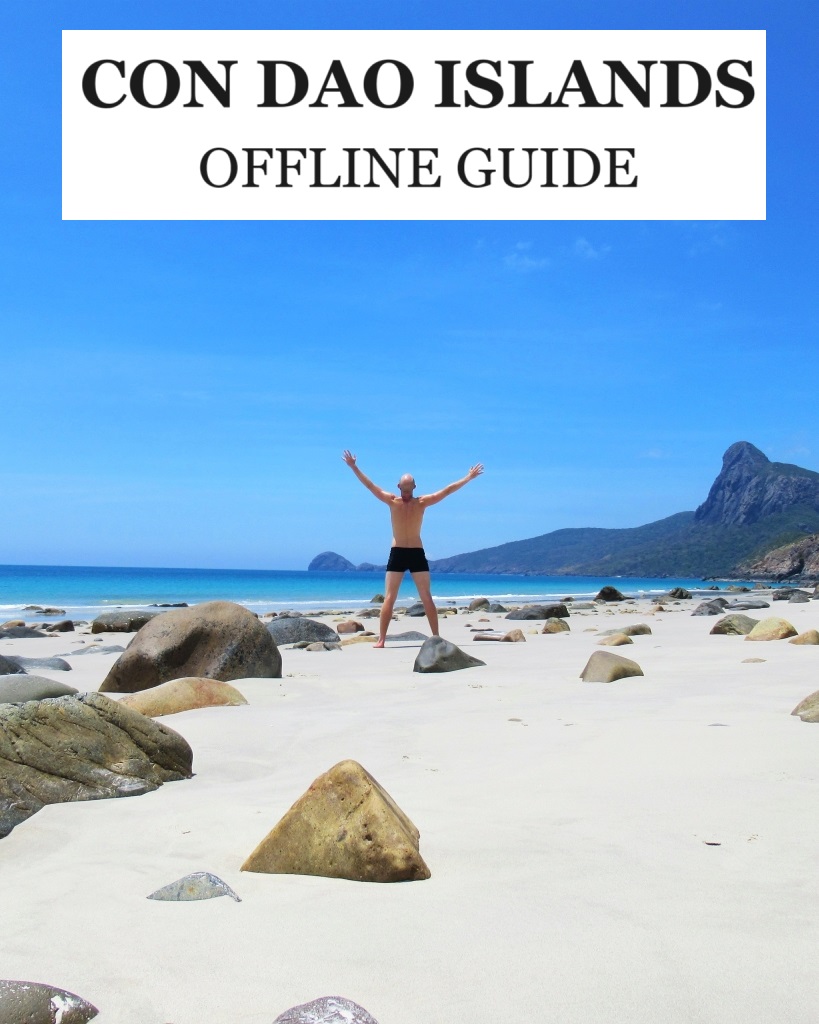






Bonjour, je n’arrive pas à réserver des billets de bateau de Vung tau à Con dao pour 8 adultes pour le 19 janvier 2026.
Est ce que c’est trop tot pour réserver , merci pour votre réponse
Hi Nadine,
Yes, it is probably too early to book tickets for the boat. Perhaps try again in a couple of months.
Best,
Tom
Bonjour Tom, je vous remercie , je ferais mes réservations dans quelques mois, bonne journée, Nadine
Bonjour,
Je cherche un bateau pour rejoindre Con Dao depuis Vung Tau mais je ne trouve rien, la ligne a été arretée?
Merci d’avance pour les informations.
Hi Charlotte,
Yes, the boat from Vung Tau to Con Dao is still operating. Please see the Booking Tickets section and follow the links to the Con Dao Express website to check the current boat schedule.
Best,
Tom
Thanks Tom. Especially for the link. Makes planning so much easier
Thank you for your help.
Hi Tom,
Can you please give me an update on ferries from Vung Tau to Con Dao and return operating days. And times as well if they are available. Google searching is coming up with so much conflicting information. Tried Baolau but nothing came up. Know to avoid Ben Dam Port. Mobility would be challenged there. I cannot find a direct booking site to check.
Current plan is to Depart HCMC to Vung Tau by Limo on Wed,18th June 2025.
Spend a couple of days in Vung Tau and then catch the ferry to Con Dao. Hopefully on Fri, 20th June.
Spend a few days on Con Dao and then go to Nha Trang by train. Will need to go back to HCMC for train I think. Need to be in Nha Trang by evening of 26th June to meet up with Viet friends who will be driving down from Hue.
Is this all too hard to organise for 2 geriatric Aussies? We are fit for our age and regular visitors to Vietnam but never been to this part of the country. Avid snorkelers, thus Con Dao….
Flying one leg is an option. Thanks heaps for any help you can give.
Hi Vina,
It is too early to check times or book tickets for the boat for June. However, you can check the current boat schedule by going to the Con Dao Express website. Please see the Booking Tickets section above and follow the links.
Generally, the schedule is one sailing each day in alternating directions: for example, Monday from Vung Tau to Con Dao, Tuesday from Con Dao to Vung Tau, and so on. The sailings from Vung Tau usually leave at 7.30am and from Con Dao at 1pm.
There’s no reason to avoid Ben Dam Port. It’s a beautiful setting and it is the only port that the boat from Vung Tau sails to.
You can also fly direct to/from Con Dao with daily flights connecting Ho Chi Minh City. For more about that and everything else about the islands, please see my Con Dao Travel Guide
For train travel, please see this guide.
Best,
Tom
Well written and informative article, thank you.
Thank you, Jane.
Tom
Hi Tom, like your webpage. Thought you should know the ferry from Vung Tau to Con Dao is not currently running, hasn’t since last August it would appear. Shame since it was the easiest and our preferred route. Cheers Andy
Hi Andy,
Thank you for the update. However, it is most likely that the ferry has only stopped temporarily during the windy season when the seas are often too rough to sail. I would expect the boat to start operating again in March or April. I hope this is the case, but I suppose there’s also the chance that it has ceased to operate entirely. Otherwise, the Tran De/Soc Trang ferry is still operating as normal and there are plans to start a new ferry from Ho Chi Minh City to Con Dao in the first quarter of 2024.
Best,
Tom